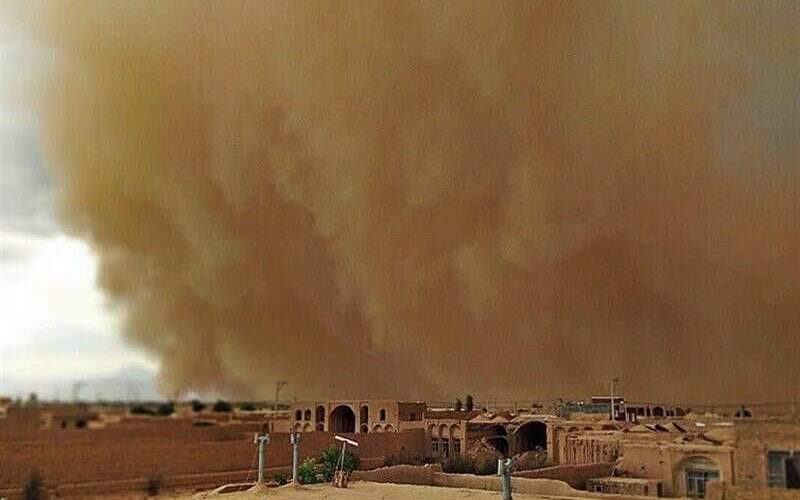The Iran Project
: A report published by four Iranian researchers suggests that the main sources of sand and dust storms affecting Iran are emerging from Iraq, Syria, and Saudi Arabia.
Sunday 24 December 2023 - 19:11
Story Code : 409728
Source : Tehran Times
Academic report suggests main sources of SDS from Iraq, Syria, and Saudi Arabia
“The most influential sources affecting Western Iran are located on the shore and northwest of Lake Tharthar, Hour-al-Azim Marsh, the shore of Razzaza, Habbaniyah Lakes, and West Hammar Marsh, which contributed to 110, 79, 59, 56, and 51 dusty days, respectively.”
Indeed, the peak dust activity in Western Iran was during the period 2008–2012 in response to the substantial shrinkage of the main water bodies in Iraq.
The main sources of dust influencing Western Iran are located in northern and eastern Saudi Arabia in spring, Deir ez-Zur in Syria’s Aleppo and Raqqa in summer, and Syria’s Homs and Al-Hasakah in winter and spring.
Western Iran here refers to the western half of Iran, which encompasses northwest, west, and southwest Iran. To identify dust events in western Iran during the period 2000–2016, meteorological data from 33 synoptic stations were obtained from the Meteorological Organization of Iran.
About 1133.5 km2 of regions in West Asia with permanent surface water in 1984 completely dried up in 2015 and acted as potential sources of dust.
Decreased precipitation in West Asia from autumn 2007 to 2012 and the occurrence of severe droughts have also contributed to the shrinkage of lakes and wetlands, as well as the reduced agricultural productivity in West Asia, all of which contributed to the intensification of dust activity in Western Iran in recent decades.
According to the results, the main sources of dust that influence Western Iran are located in Iraq. Decreases in the surface water of lakes in Iraq have led to the emergence of some new sources of dust, which contributed to a substantial increase in dust activity in western Iran in recent years.
Regional co-op to address SDSs
Since sand and dust storms are cross-border phenomena, all countries – including countries of origin and countries touched by such phenomena – are required to cooperate with each other in order to be able to tackle this issue.
This is a vitally important issue highlighted in the International Conference on Combating Sand and Dust Storms held in Tehran, on September 9-10, in which representatives of some 50 countries and 15 international organizations participated.
According to studies, there are about 330 million hectares of sand and dust sources in West Asia and Central Asia. Some of these sand and dust storms are originated from low-intensity centers and some others originate from high-intensity ones. Meanwhile, some 270 million hectares of these areas are high-intensity centers of sand and dust storms. They produce some 147 million tons of dust annually.
These sands and dust storms contain particles of less than 10 microns which are endangering the health of the people of the region. In addition, large-scale environmental issues further intensify social gaps and can result in the emergence of internal and external environmental challenges.
Expected outcomes of environmental diplomacy – as envisaged in the general environmental policies of the Islamic Republic of Iran – include, inter alia, taking effective advantage of international opportunities and incentives, facilitating the transfer and development of technology, and introducing related innovations.
As a matter of fact, the International Conference on Combating Sand and Dust Storms was a suitable platform for different countries to share their knowledge and experiences in combating sand and dust storms and managing this hazardous phenomenon. The abovementioned conference can also prepare the proper context for establishing a regional or an international fund for dealing with such an important issue.
Considering the social, economic, health, and environmental effects and consequences of this phenomenon, it is necessary to adopt international, regional, and sub-regional solutions with the participation of all countries affected by this phenomenon and the international organizations’ support, to take more seriously actions to tackle this challenge.
Creating a fund is necessary
Stefan Priesner, the United Nations Resident Coordinator for Iran, has said creating a fund is a necessity to address the issue of sand and dust storms.
“At the opening ceremony [of the international conference on combating sand and dust storms] the respected president of Iran announced that the challenge of sand and dust storms is a universal challenge that demands international cooperation to be dealt with,” Priesner said in an address to the ending ceremony of the conference.
He went on to say that since the issue of sand and dust storms is a multidimensional issue, all the participating countries unanimously asked for international cooperation in this regard.
“Phenomena like sand and dust storms require us to make efforts to identify our points of strength and reinforce our cooperation.”
Half of the natural phenomena are caused by human interventions, which is why all participants have asked for taking decisive measures concerning water and soil, adopting policies to prevent soil degradation, and creating a fund to solve the problems, he highlighted.
Reporter : Editorial of The Iran Project
# Tags











